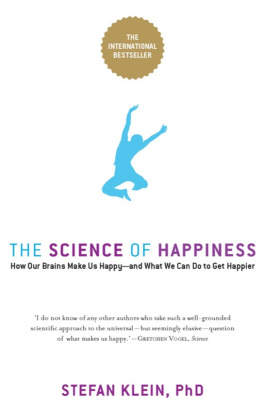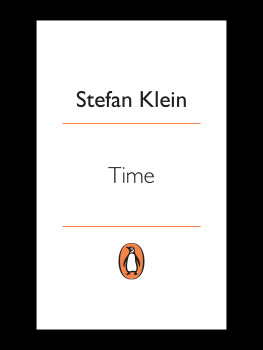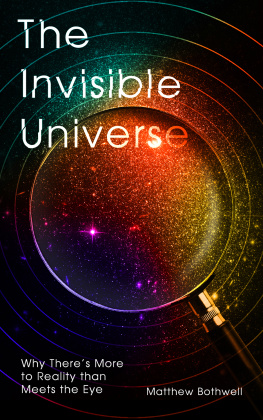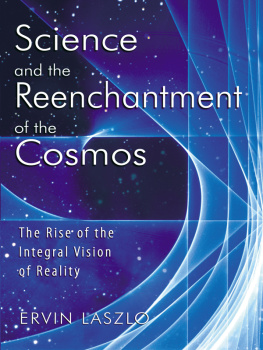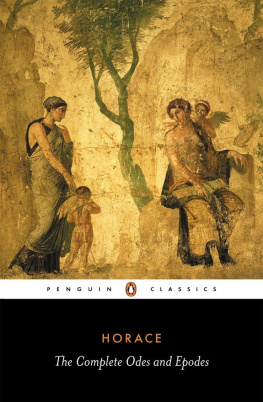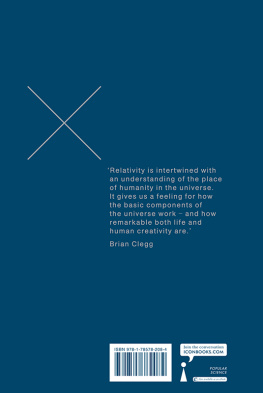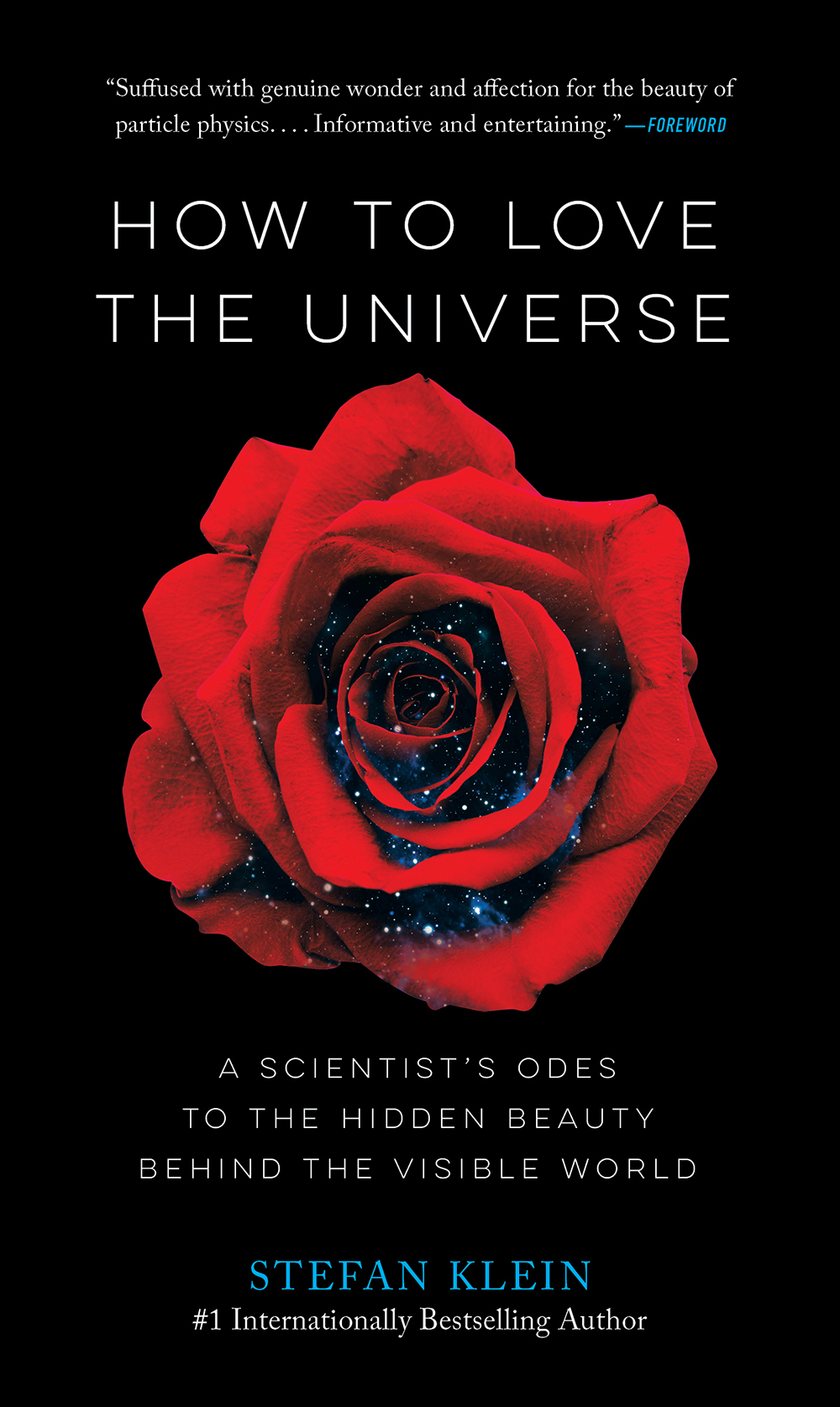ABOUT THE AUTHOR
Stefan Klein studied physics and analytical philosophy, completing his doctorate in theoretical biophysics, before turning to writing to inspire people with a reality that is more exciting than any thriller. His book The Science of Happiness is an international bestseller, followed by the highly acclaimed All by Chance, The Secret Pulse of Time, Leonardos Legacy, We Are All Stardust, and Survival of the Nicest. Kleins work has won numerous national and international awards, and has been translated into more than twenty-five languages. He lives with his family in Berlin, where he is a visiting professor at Berlin University of the Arts.
ABOUT THE TRANSLATOR
Mike Mitchell is an award-winning literary translator of more than eighty books from the German and French, including Herbert Rosendorfers Letters Back to Ancient China, for which he received the Schlegel
Tieck Prize. He lives in Argyll, on the west coast of Scotland.
ALSO BY STEFAN KLEIN
We Are All Stardust:
Scientists Who Shaped Our World Talk about Their Work, Their Lives, and What They Still Want to Know
Survival of the Nicest:
How Altruism Made Us Human and
Why It Pays to Get Along
Leonardos Legacy:
How Da Vinci Reimagined the World
The Secret Pulse of Time:
Making Sense of Lifes Scarcest Commodity
The Science of Happiness:
How Our Brains Make Us Happy
and What We Can Do to Get Happier
HOW TO LOVE THE UNIVERSE: A Scientists Odes to the Hidden Beauty Behind the Visible World
Copyright 2017 by S. Fischer Verlag GmbH
Translation copyright 2018 by The Experiment, LLC
Originally published in Germany as Das All und das Nichts by S. Fischer Verlag GmbH in 2017. First published in North America by The Experiment, LLC, in 2018.
All rights reserved. Except for brief passages quoted in newspaper, magazine, radio, television, or online reviews, no portion of this book may be reproduced, distributed, or transmitted in any form or by any means, electronic or mechanical, including photocopying, recording, or information storage or retrieval system, without the prior written permission of the publisher.
The Experiment, LLC | 220 East 23rd Street, Suite 600, New York, NY 10010-4658 theexperimentpublishing.com
Many of the designations used by manufacturers and sellers to distinguish their products are claimed as trademarks. Where those designations appear in this book and The Experiment was aware of a trademark claim, the designations have been capitalized.
The Experiments books are available at special discounts when purchased in bulk for premiums and sales promotions as well as for fund-raising or educational use. For details, contact us at .
The translation of this work was supported by a grant from the Goethe-Institut.

Library of Congress Cataloging-in-Publication Data
Names: Klein, Stefan, 1965
Title: How to love the universe : a scientist's odes to the hidden beauty
behind the visible world / Stefan Klein.
Other titles: All und das Nichts. English
Description: New York : The Experiment colophon, 2018. | Originally published
in German as: Das All und das Nichts (Frankfurt am Main : S. Fischer
Verlag GmbH, 2017). | Includes bibliographical references.
Identifiers: LCCN 2018030508| ISBN 9781615194865 (cloth) | ISBN 9781615195084
(ebook)
Subjects: LCSH: Cosmology--Popular works. | Science--Popular works.
Classification: LCC QB982 .K5513 2018 | DDC 523.1--dc23
LC record available at https://lccn.loc.gov/2018030508
ISBN 978-1-61519-486-5
Ebook ISBN 978-1-61519-508-4
Cover and text design by Sarah Smith | Translation by Mike Mitchell
Author photograph by Andrea Labes
Manufactured in the United States of America
First printing November 2018
10 9 8 7 6 5 4 3 2 1
In memory of my father,
who showed me
T he more we know about reality, the more mysterious it seems to us. Astonishingly enough, it is sensitive people in particular who dispute that. During a panel discussion, a well-known German poet once remonstrated me, saying that he detested our ever more precise knowledge of genes because decoded man was a bore. And Edgar Allan Poe, the master of the mystery story, called science a predator on poetry:
Why preyest thou thus on the poets heart,
Vulture, whose wings are dull realities?
How wrong one can be! Poets are rightly afraid of a world that has lost its magic, but anyone who harbors that fear is confusing research into our world with an Easter egg hunt, in the course of which all the hiding places are eventually plundered. Genuine insight, however, regularly throws up more questions than it can answer.
The great American physicist Richard Feynman was once asked by an artist friend whether a scientist wouldnt destroy the beauty of a rose if he examined it. Feynman replied that he was able to feel the beauty the artist felt, certainly, but that he saw a deeper beauty, one that only revealed itself through understandingthe beauty, for example, in the fact that flowers acquired color during the course of evolution in order to attract insects. This knowledge, he went on, led to further questions, for example whether insects had any kind of aesthetic sense. Getting to know the flower more closely took away none of its beautyon the contrary, it added beauty, and made the rose appear even more impressive and mysterious.
Feynman could have gone on to say that the scientists sharp eye even revealed beauty in things that at first seem ugly or even repulsive to us. The fading of the rose is a symbol of decline, but if you look closely, you can see the hip growing deep within the withering petals. Each seed in the rose hip is a miracle of its own, because in each tiny kernel, the complete embryo of a rose is waiting for the moment when it can soak up water, expand, break out of the husk, and stretch out its seed-leaves to the sun.
In order to grow, the germinating rose needs light, water, and oxygen. Living beings from long ago have bequeathed it air to breathe. The flower is heir to single-celled organisms that covered the seabed in thick, blue-green mats well over three billion years ago and still live there today. Back then there was almost no oxygen in the atmosphere, and all higher life-forms would have suffocated. The single-celled organisms were only a few thousandths of a millimeter in size. Compared with the rose, these creatures called cyanobacteria seem exceedingly primitive to us and yet they were already masterpieces of nature. Some cyanobacteria can even see! Their bodies have a tiny receptor, a simple camera eye that allows them to distinguish between light and darkness. They avoid the darkness and move toward the light. They use the sunlight in order to acquire energy through photosynthesis, like modern plants. After cyanobacteria had settled in the ancient ocean, they converted the carbon dioxide dissolved in the seawater into oxygen. For a billion years, the oxygen bubbled up from the depths of the ocean. Thus these sighted cyanobacteria created the air that the rose needs to germinate. They made the earth habitable for higher life-forms.
For their part, the cyanobacteria developed out of earlier, even simpler life-forms that could also survive without oxygen. These unknown organisms colonized the earth 3.8 billion years ago. Without them we would never have had a chance to see a rose. Where did this life come from? That we dont know.


